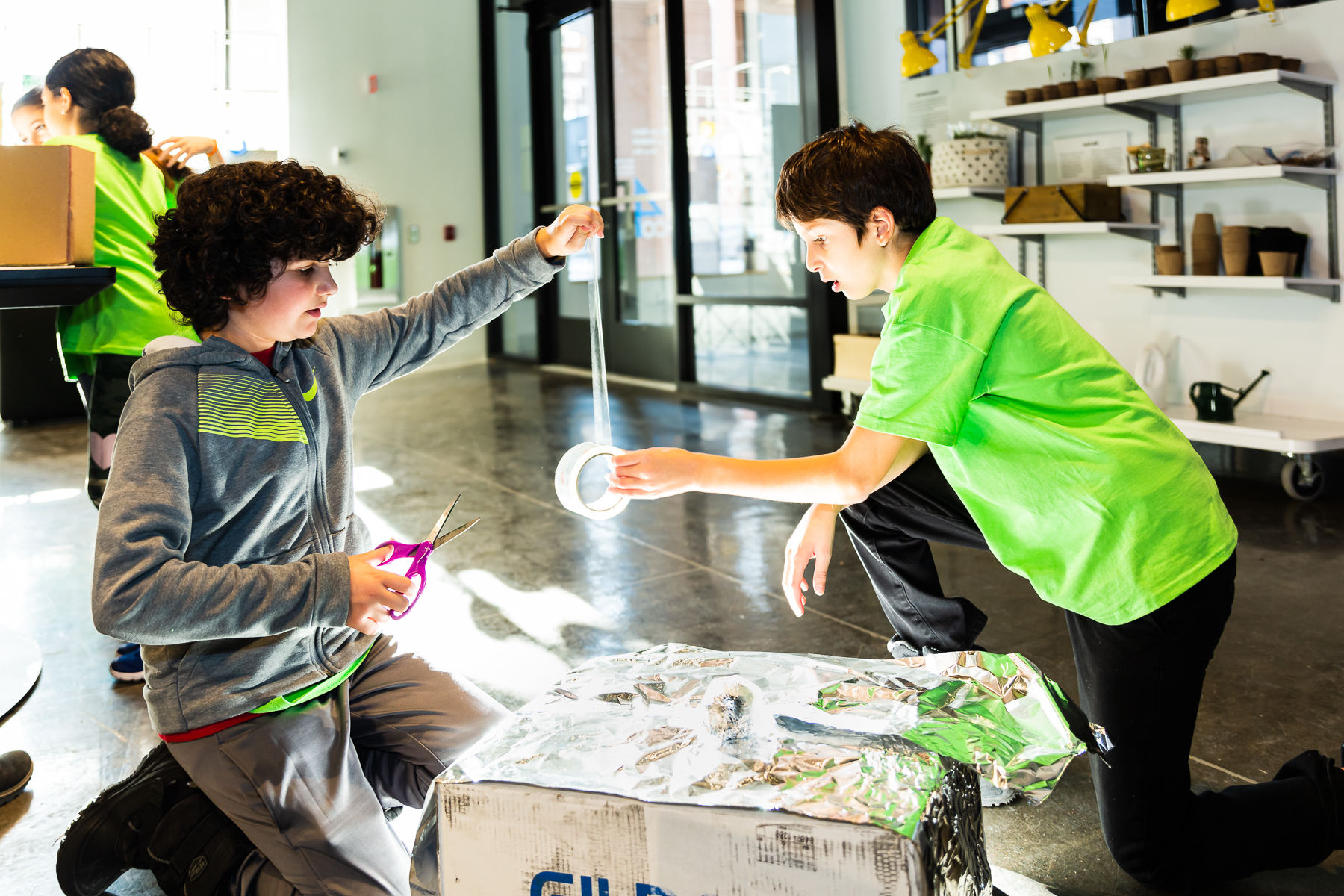Children around the world work together to design for a sustainable future
The fifth annual edition of the Global Children’s Designathon took place on Nov. 16 at 4th Space, bringing together 40 children from Montreal to work with others around the world. The children – from seven to 12 years old – worked to develop creative solutions from various Sustainable Development Goals related to food and climate action.
After brainstorming their plans, the youngsters brought their designs to life, using simple electric motors, micro bits, LED lights, sensors, and recycled material.
They worked in groups, developing alternative shelters and projects that would deliver food to those in need, pick up waste, and more, all powered by solar energy.
Although, the prototyping process did create a fair amount of waste. Bringing 40 children together working with the Designathon team, a pizza lunch, snacks and oh so much hot glue is bound to be a messy time.
4th Space was well equipped with proper composting and waste disposal, urging everyone to mind their waste and clean up after themselves throughout the process.
But such an activity can lead to one asking themselves, how can this possibly be good for the environment?
Such crafting empowers children; they too have a role to play in shaping our future, not just scientists and politicians. They develop skills, creative and critical thinking, communication, collaboration, digital literacy and a deeper understanding of the world.
Occurring around the world at the same time, the Designathon sets aside time to Skype with children working towards the same goals in another country. This year’s young Montrealers, though still quite sleepy at 9 a.m., Skyped with young Arubans, who were excited to see the snow on the corners of Mackay St. and Maisonneuve Blvd.
In addition to the crafting process, Designathon conducts research, recording the children’s shared concerns, solutions and the language they use surrounding the crises. Sometimes, these simple prototypes are adopted by companies and, in consultation with the young designers, can be developed into a product or service. In order to facilitate this kind of cross-pollination, the Designathon team records the children as they present their ideas, making them available on their website.
While the Global Designathon occurs only once a year, the organization continues to work with schools throughout the year to develop their “changemaker” curriculum.
In this way, these children become part of something greater than themselves. It might seem simple or even silly at first, but the impact of this kind of education is no joke.
Photo by Maxime Lapostolle.




